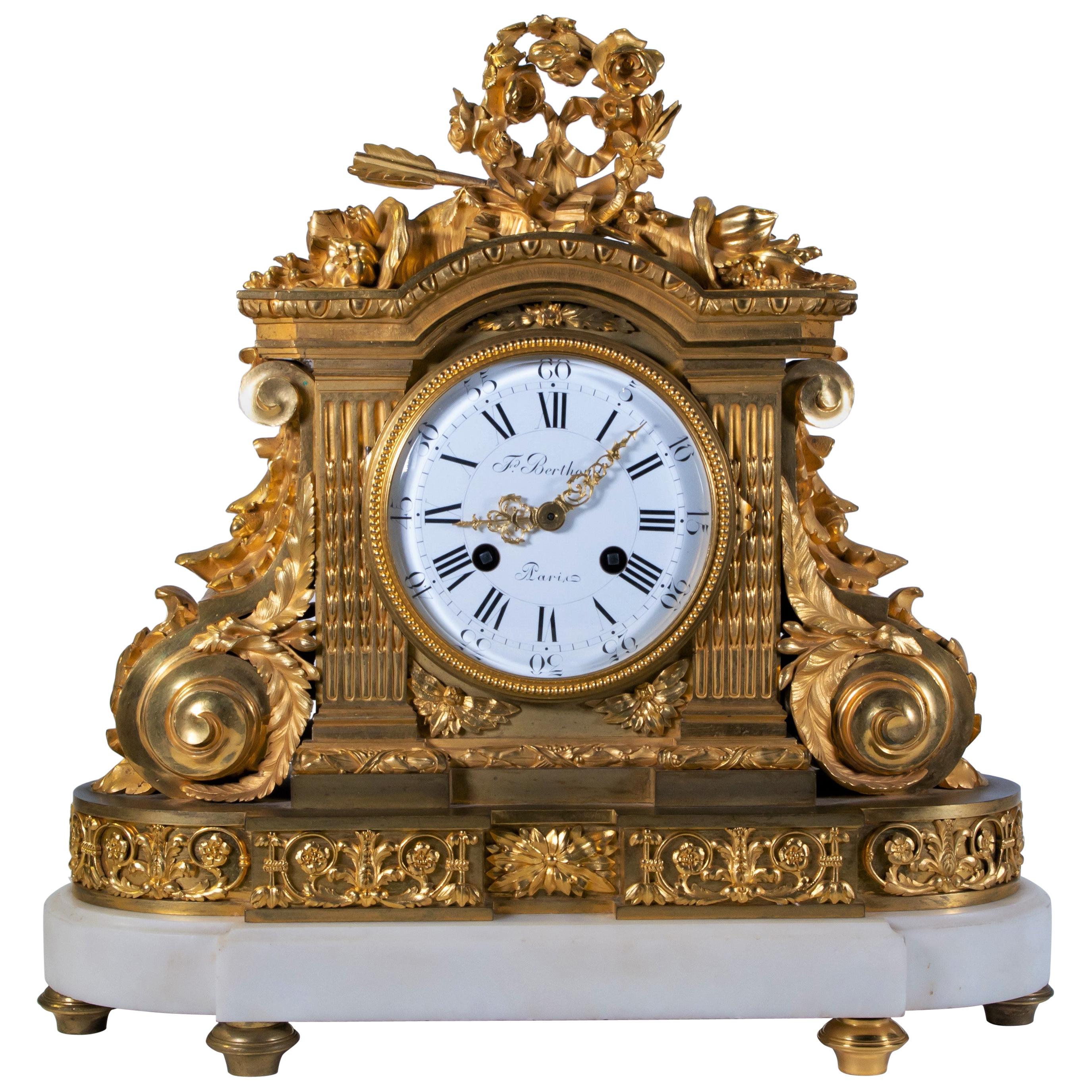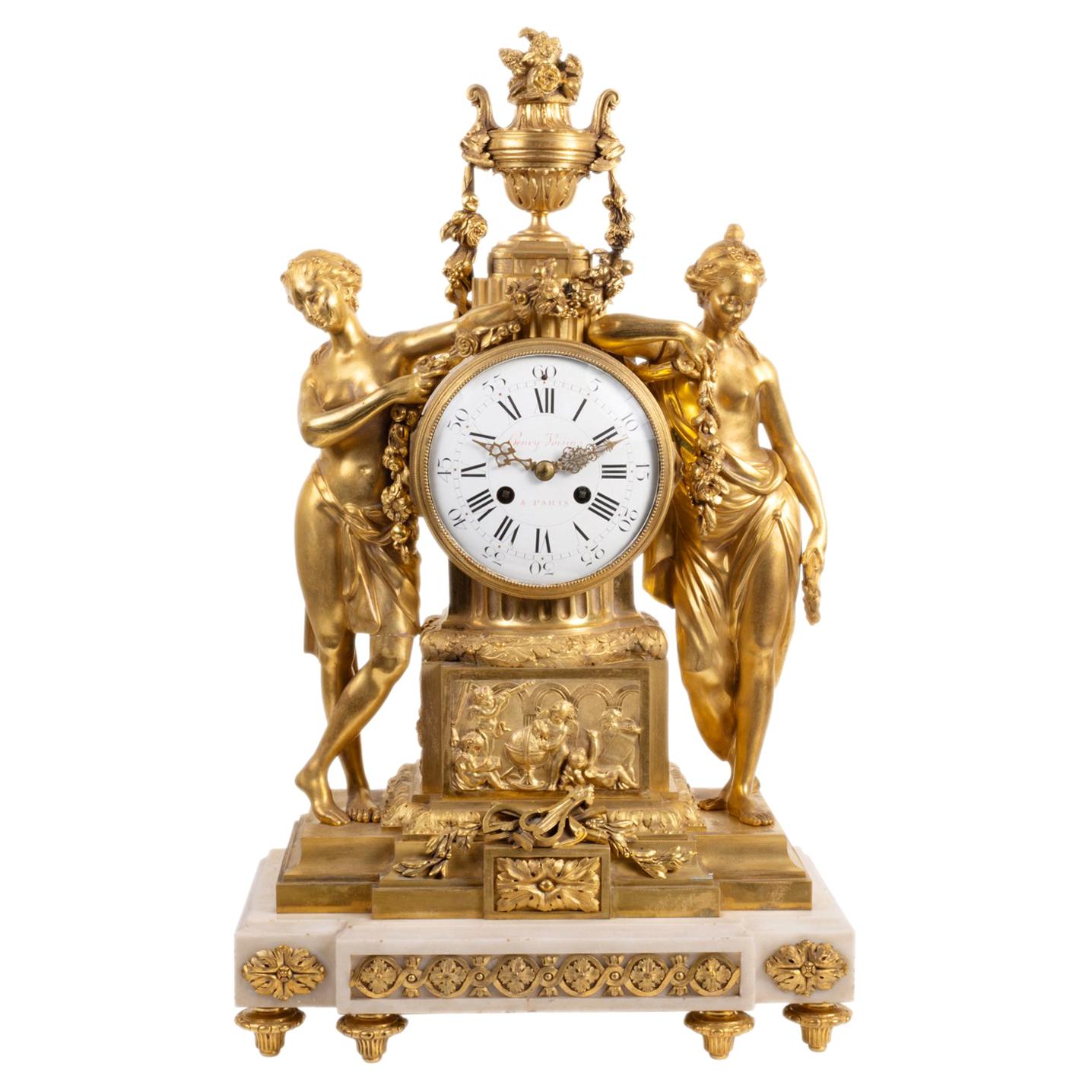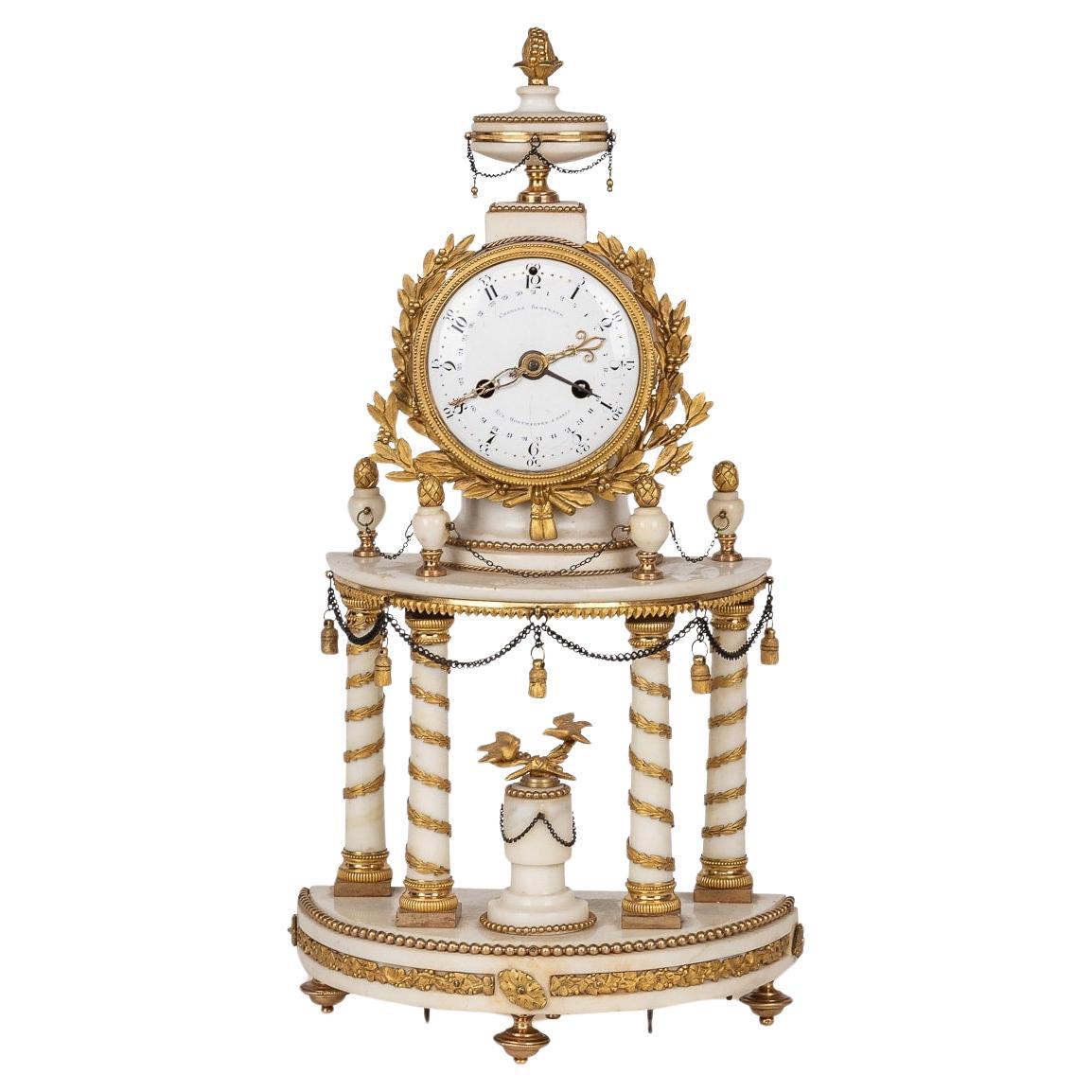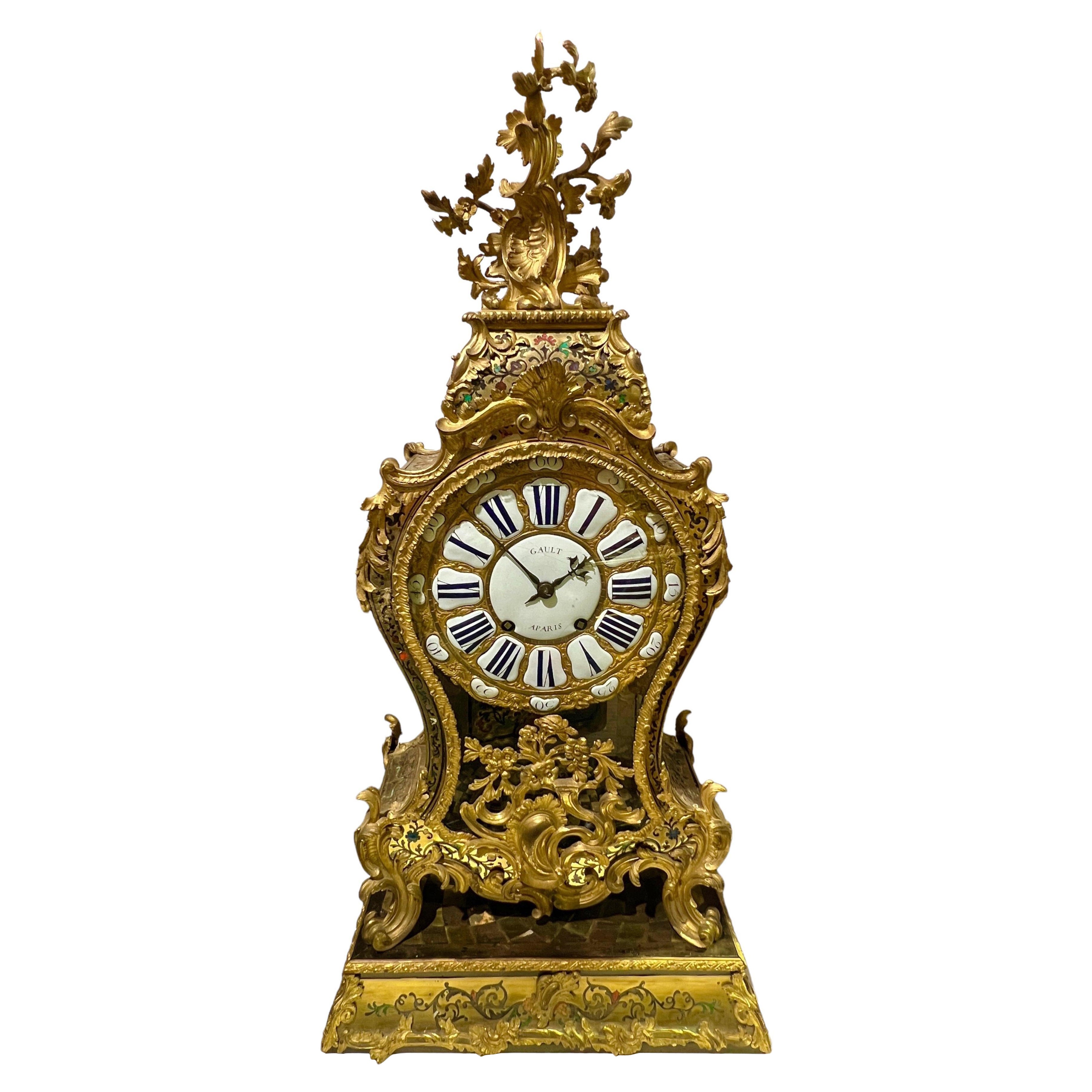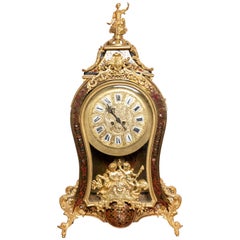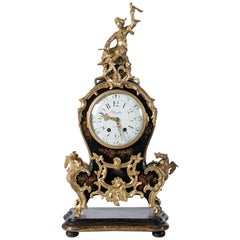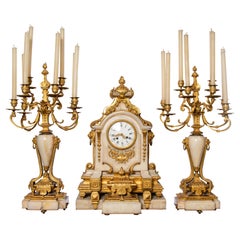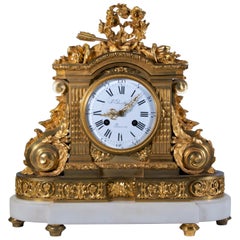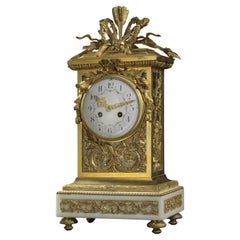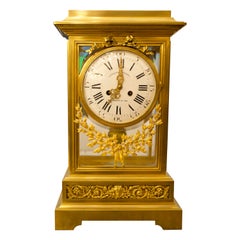Items Similar to Gilt Bronze and Marble Mantel Clock, Signed F. Berthoud, Paris
Want more images or videos?
Request additional images or videos from the seller
1 of 6
Gilt Bronze and Marble Mantel Clock, Signed F. Berthoud, Paris
$28,000
£21,158.68
€24,433.08
CA$39,125.77
A$43,413.34
CHF 22,740.84
MX$532,364.11
NOK 289,255.68
SEK 273,045.02
DKK 182,212.80
Shipping
Retrieving quote...The 1stDibs Promise:
Authenticity Guarantee,
Money-Back Guarantee,
24-Hour Cancellation
About the Item
Gilt bronze and marble mantel clock, signed F. Berthoud, Paris, France, early 19th century.
Clock works.
- Creator:Ferdinand Berthoud (Clockmaker)
- Dimensions:Height: 17.72 in (45 cm)Width: 13.78 in (35 cm)Depth: 5.91 in (15 cm)
- Style:Louis XVI (In the Style Of)
- Materials and Techniques:
- Place of Origin:
- Period:
- Date of Manufacture:Early 19th Century
- Condition:Wear consistent with age and use.
- Seller Location:Buenos Aires, AR
- Reference Number:1stDibs: LU4881119625132
About the Seller
5.0
Vetted Professional Seller
Every seller passes strict standards for authenticity and reliability
Established in 2000
1stDibs seller since 2019
76 sales on 1stDibs
Typical response time: 11 hours
- ShippingRetrieving quote...Shipping from: Buenos Aires, Argentina
- Return Policy
Authenticity Guarantee
In the unlikely event there’s an issue with an item’s authenticity, contact us within 1 year for a full refund. DetailsMoney-Back Guarantee
If your item is not as described, is damaged in transit, or does not arrive, contact us within 7 days for a full refund. Details24-Hour Cancellation
You have a 24-hour grace period in which to reconsider your purchase, with no questions asked.Vetted Professional Sellers
Our world-class sellers must adhere to strict standards for service and quality, maintaining the integrity of our listings.Price-Match Guarantee
If you find that a seller listed the same item for a lower price elsewhere, we’ll match it.Trusted Global Delivery
Our best-in-class carrier network provides specialized shipping options worldwide, including custom delivery.More From This Seller
View AllGilt Bronze and Wood Table Clock, France, Late 19th Century
By Ecole Boulle
Located in Buenos Aires, Buenos Aires
Gilt bronze and wood table clock, France, late 19th century.
Category
Antique Late 19th Century French Louis XV Table Clocks and Desk Clocks
Materials
Bronze
$9,600 Sale Price
20% Off
Gilt Bronze and Wood Table Clock, Clock Signed Biesta, Paris, circa 1890
Located in Buenos Aires, Buenos Aires
Gilt bronze and wood table clock. Clock signed Biesta, Paris, circa 1890.
Category
Antique 1890s French Chinoiserie Table Clocks and Desk Clocks
Materials
Bronze
Gilt and Patinated Bronze Mantel Clock, Machine Signed L. Moinet, France
By Louis Moinet
Located in Buenos Aires, Buenos Aires
Gilt and patinated bronze mantel clock, machine signed L. Moinet A Paris. France, early 19th century.
Category
Antique Early 19th Century French Empire Mantel Clocks
Materials
Bronze
Gilt Bronze and Marble Garniture, Clock Signed Raingo Fres, France, 19th Century
By Raingo Frères
Located in Buenos Aires, Buenos Aires
Gilt bronze and marble three piece clock garniture. Clock signed Raingo Fres. France, 19th century.
Clock works.
Clock dimensions: 71 cm height, 46 cm ...
Category
Antique Late 19th Century French Neoclassical Garniture
Materials
Marble, Bronze
Marble and Gilt Bronze Clock, Machine Signed Bonnet and Pottier, France, 1920
By Bonnet and Pottier
Located in Buenos Aires, Buenos Aires
Marble and gilt bronze clock. Machine signed Bonnet and Pottier, France, 1920.
Category
Vintage 1920s French Art Deco Table Clocks and Desk Clocks
Materials
Marble, Bronze
Gilt-Bronze and Cloisonné Garniture. France, 19th Century
Located in Buenos Aires, Buenos Aires
Gilt-bronze and cloisonné garniture, France, 19th century.
Clock works.
Category
Antique Late 19th Century French Louis XVI Table Clocks and Desk Clocks
Materials
Bronze, Enamel
You May Also Like
18th Century Carrara Marble and Dore Bronze Mantle Clock, F. Berthoud
By Ferdinand Berthoud
Located in New York, NY
A fabulous and quite important 18th century Louis XVI period Carrara marble and dore bronze mantle clock, signed F. Berthoud, Paris. The body of the clock is exceptionally cast and f...
Category
Antique 1780s French Louis XVI Mantel Clocks
Materials
Carrara Marble, Bronze
A Louis XVI Style Mantel Fine Gilt-Bronze Clock by François Linke
By François Linke
Located in Brighton, West Sussex
A Very Fine Gilt-Bronze Clock With A White Marble Base by François Linke.
The case signed 'Linke'.
This rare example of a clock by François Linke has a twin train eight-day mov...
Category
Antique 19th Century French Louis XVI Mantel Clocks
Materials
Marble, Enamel, Ormolu
19th Century Louis XVI Style Regulator Gilt Bronze Clock by Ferdinand Berthoud
Located in Southall, GB
A stunning 19th Century Louis XVI Style Regulator Gilt Bronze clock by Ferdinand Berthoud.
A French Louis XVI style gilt bronze regulator clock, the finely cast rectangular case with four beveled glass sides; the large white enamel dial with Roman numerals is decorated above and below with gilt bronze garlands. The dial is signed and the stepped base is further embellished on three sides with a gilded frieze...
Category
Antique 19th Century French Mantel Clocks
Materials
Bronze
$4,956 Sale Price
20% Off
Large Louis XVI Style Ormolu Mantel Clock, 19th Century
By Henri Voisin
Located in Brighton, Sussex
A Fine quality French 19th century gilded ormolu and white marble mantel clock in the Louis XVI style. Having a two handled urn to the top with flowers and garlands draping down to t...
Category
Antique Early 19th Century French Louis XVI Mantel Clocks
Materials
Marble, Ormolu
18th Century French Louis XVI Marble & Gilt Bronze Portico Clock C. Bertrand
By Charles Bertrand
Located in Royal Tunbridge Wells, Kent
A monumental 18th Century Portico clock signed by Charles Bertrand. It is of the classical style of Louis XVI, made of white marble mounted with ormolu decoration. The movement is he...
Category
Antique 18th Century French Louis XVI Mantel Clocks
Materials
Marble, Ormolu
Large 18th Century French Louis XV Gilt Bronze Boulle inlaid Mantel Clock
Located in New York, NY
Very large (40 inch tall) ormolu bronze mantel clock from the Louis XV period with Boulle style inlaid brass and enamel decorations with original pendulum. By the Paris maker, Denis ...
Category
Antique 18th Century French Louis XV Mantel Clocks
Materials
Bronze, Enamel
More Ways To Browse
Antique French Marble Mantel Clocks
19th Century Mantel Marble Clock
Paris Bronze Mantel Clocks
19th Century French Marble Mantel Clock
F Clocks
Antique Clock Other Antique Clocks
French Bronze Marble Clock
French Bronze Ormolu Glass
Eight Day Clocks Antique
Pendulum Clock Movement
Museum Clock
Just Clock
Gilded French Clock
Figural Clock
Antique French Marble Mantel Clocks
Mantel Clock Set
Rococo Paris
Antique Bronze Bell
